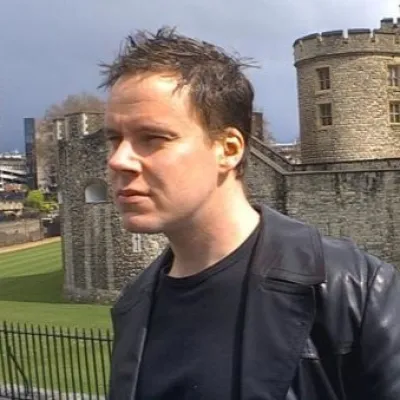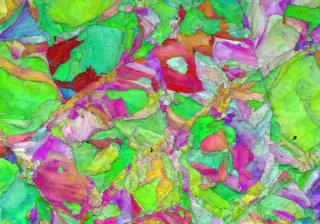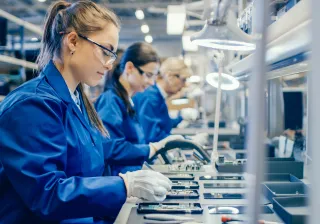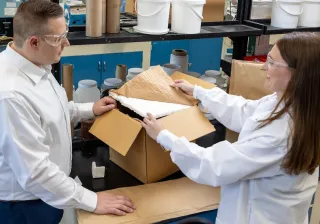What if new biomaterials needed in the circular economy outperform the traditional solutions? And as a bonus, we could design new bio-based materials in a very short time? With the help of VTT ProperTune, all of this is becoming a reality.
Today´s computational material science is as cool as science fiction. We are finally starting to be at the point where we design materials atom by atom. We are arranging materials so that they perform exactly as we want. We can control the design process, understand the causalities, and produce unique materials with new technologies.
We have recently found dazzling new ways to incorporate artificial intelligence into our designing procedures. The AI gives us the capability to discover new things at a far faster pace than we could even dream about a couple of years ago.
Simulation instead of trial and error
A significant asset of our primary design tool, VTT ProperTune, has always been speed. With support from AI, simulation driven design is 2–10 times faster than trial and error.
One crucial area where design speed is needed is the circularity of materials.
The circular economy is mainly about cycles, loops, and materials. It is challenging to develop circularity without developing materials because materials are either enabling sustainability or making it a lot more complicated.
To create cycles, we need to get the materials designed better than we do today.
Achieving the required level of circularity could at best be done in the biomaterial realm because, in any case, we have to get rid of harmful fossil-based materials.
If you ask the material industry how long it takes to introduce new sustainability-driven characteristics in their materials, the answer is often four or five years.
If every step takes that much time, we are not getting a circular economy in the time frame we need to continue living on this planet and have the standard of living we have enjoyed to this point. We must reduce the design time from years to months.
Material design is at the center of circularity
Computational material design has, over the last five years, found itself at the center of circularity. We are in a race to come up with renewable materials that perform adequately.
Today, we can set up targets on the circular economy level. Then we start to design the required materials on the nanometer scale and above. In this way, VTT ProperTune is the glue linking circularity, bioproducts, and material science together.
What we should, and could achieve? For example, entirely new biopolymers with biodegradable reinforcement matrices or polymer-based materials fulfilling the principles of circular economy. These new biomaterials could be used in non-conventional areas like batteries, textiles, insulation and construction.
New tools for the SME´s
When companies are hurrying to replace non-sustainable materials with new ones, there is always the assumption that new biomaterials are more costly if we want to achieve the same service level as before. This is not the case. New materials could even be cheaper and perform better than the traditional ones.
Modern digital material modeling offers tremendous business opportunities for existing biomaterials and forest industry companies. We can soon digitalize the material field, and we are finally on the verge of solving the problems the industries have tried to solve for years. For example, we could create stronger and more durable packaging materials that are also extremely light or we could design new type of bio-barriers for sustainable, very high-performing food packaging. Companies could also offer targeted materials for their customers.
A possibility to disrupt the whole material business is also emerging. Is it time for new players to step up with new competitive solutions? During the coming years, new agile SME´s may do a better job than the industrial giants. Either way, we have the tools to make it happen. With VTT ProperTune, designing and producing new materials can be conducted in a new manner.
Like kids on a playground
All in all, VTT ProperTune is a generalized framework to look at the material aspects in either designing new materials or optimizing the old ones. We can work as well with metals, biomaterials, and ceramic as well as composite materials. We can invent and develop new materials, solutions, and manufacturing processes.
Our goals as researchers are easy to define.
In the ProperTune group, we are like kids on a new playground discovering its possibilities. We do funny things that may have a huge impact.
We seem already to be quite competitive. It's interesting to build on what we have already achieved and push the frontiers forwards.











